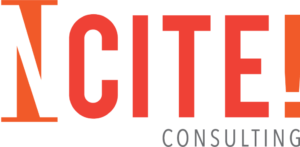Nonprofit leaders often juggle limited resources, ambitious goals, and passionate teams. Streamlining your internal processes isn’t a nice-to-have—it’s a must-have!
Simplifying workflows can save time, reduce frustration, and unlock more capacity to focus on your mission. In this post, we’ll explore practical, actionable steps tailored specifically for nonprofit organizations eager to boost efficiency without compromising heart or impact.
Why Streamlining Matters in Nonprofits
In the nonprofit world, every minute counts and every dollar stretches far. Inefficient processes drain valuable resources and dampen team morale. Streamlined operations lead to:
- More focused mission delivery
- Reduced operational costs
- Improved team collaboration and satisfaction
- Faster decision-making
Efficiency is not about cutting corners; it’s about working smarter so your vision has room to grow.
Step 1: Map Your Current Processes
Start by gaining clarity on how things work right now. This baseline snapshot reveals bottlenecks and redundancies that often hide in plain sight.
- Document key workflows: fundraising campaigns, volunteer onboarding, grant applications, event planning.
- Use flowcharts or simple checklists.
- Involve team members who perform these tasks daily—they hold invaluable insights.
This mapping phase sets the foundation for targeted improvements instead of guesswork.
“You can’t improve what you don’t understand.”
Step 2: Identify Pain Points and Bottlenecks
Once you have a clear picture, scrutinize each step with questions like:
- Where do delays commonly occur?
- Which steps require repetitive manual work?
- Are there approvals or handoffs causing confusion or wait times?
- What tasks feel frustrating or unnecessary to staff?
Collect feedback through surveys or informal chats. Sometimes the smallest irritants hint at big opportunities for change.
“What slows you down shows you where to level up.”
Step 3: Prioritize Changes Based on Impact and Effort
Not all process improvements are created equal. Focus on changes that deliver the greatest return with reasonable effort.
Create a simple matrix:

Start with quick wins—small tweaks that immediately ease pain points—and then tackle more complex initiatives.
Efficiency grows when you work with—not against—capacity.
Step 4: Leverage Technology Thoughtfully
Technology can be a powerful ally when chosen wisely. Avoid chasing shiny tools without alignment to your specific needs.
Key tips:
- Automate repetitive tasks such as donation receipts, volunteer scheduling, or data entry.
- Use project management platforms customized for nonprofits (e.g., Asana, Trello with nonprofit templates).
- Ensure integration between systems (CRM, email marketing, finance software) to prevent double entry.
- Provide adequate training so teams embrace new tools confidently.
“The right tech removes roadblocks; the wrong tech creates them.”
Step 5: Standardize Procedures with Clear Documentation
Consistency is the backbone of efficiency. When everyone follows well-documented procedures, errors drop and onboarding accelerates.
Develop:
- Step-by-step guides for critical workflows.
- Templates for emails, reports, grant proposals.
- Checklists for recurring events or campaigns.
Make documentation accessible—consider cloud storage or an internal wiki—and update regularly based on feedback and changes.
Repeatable processes are the quiet engine of stability—minimizing chaos, wasted time, and frustration so your team can focus more on why they do what they do: creativity, innovation, inspired action, and impact.
Step 6: Foster a Culture of Continuous Improvement
Efficiency isn’t a one-time project but an ongoing mindset. Encourage your team to spot inefficiencies and suggest solutions openly.
Ways to nurture this culture:
- Schedule regular process review meetings.
- Celebrate improvements publicly.
- Provide channels for anonymous feedback.
- Empower frontline staff to test small changes without bureaucratic hurdles.
A nimble nonprofit adapts quickly—and thrives in uncertainty.
Step 7: Measure Progress and Adjust Accordingly
Set clear metrics aligned with your efficiency goals:
- Time spent per task or project phase
- Number of errors or reworks
- Staff satisfaction scores related to workflow ease
- Cost savings from reduced resource use
Track these indicators consistently to see what works well and where further tweaks are needed. Data-driven decisions can help you keep momentum going strong!
Bonus Tips for Nonprofit Leaders Ready to Streamline
- Engage volunteers: Their fresh perspective often uncovers overlooked inefficiencies.
- Simplify approval chains: Too many sign-offs slow everything down—empower trusted staff with decision-making authority.
- Minimize process touch points: Simplify steps to reduce repeated handling and unnecessary delays.
- Batch similar tasks: Grouping related activities reduces context switching and boosts focus.
- Delegate strategically: Assign tasks based on strengths—not just availability—to maximize productivity.
- Celebrate progress: Recognizing milestones energizes teams during change efforts.
“Efficiency doesn’t mean losing your nonprofit’s soul. It means carving out more time and energy so your mission shines brighter than ever before. With thoughtful process streamlining, you equip your team to do their best work—and create lasting impact that matters most.”
Ready to roll up your sleeves? Start mapping those workflows today—your future self (and beneficiaries!) will thank you.

